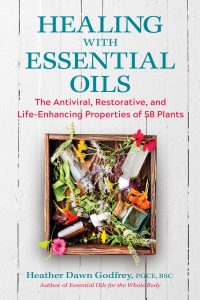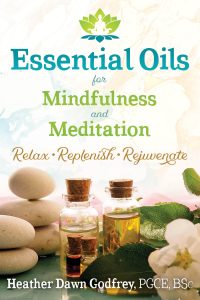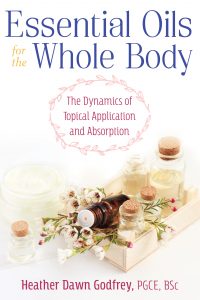- info@aromantique.co.uk
- 07419 777 451
 Heather Dawn: Godfrey. P.G.C.E., B.Sc. (Joint Hon)
Heather Dawn: Godfrey. P.G.C.E., B.Sc. (Joint Hon)
As well as smelling very pleasant, essential oils have many valuable therapeutic qualities. Here are just a few:
Adaptogenic. They aid the body to adapt to and resist the damaging effects of stress, and promote and/or aid in restoring normal physiological functioning.
Antimicrobial. They aid the body to combat infections, viruses, bacteria, and fungal infestation.
Hormone balancing and supporting. Some essential oils, such as rose and geranium, have balancing qualities. Other oils can have various hormonal qualities (which may have both negative and positive effects), from being oestrogen-like (for example, clary sage and fennel) to stimulating the release of cortisol (for example, lavender and rosemary).
Immune boosters. They support and strengthen the immune system (for example, thyme and tea tree).
Meditation aids. They deepen and slow breathing (for example, frankincense, myrrh and patchouli), aid mental ‘wakefulness’ and focus (for example, cedarwood and rose), support the parasympathetic nervous system to calm and balance mood and emotion, and engender a sense of connection and spirituality (for example, rose, myrrh and spikenard).
Psycho-emotional restoratives and balancers. They invigorate, uplift, calm, aid clearer thinking, and concentration (for example, rosemary and peppermint). They support memory recall (enhance, reinforce, and strengthen). They instil feelings of joy, pleasure, sensuality, and a sense of being ‘grounded’ and ‘centred’ (for example, vetivert and ylang ylang).
Skin healing. They aid regeneration and repair skin and underlying soft tissue and structures (such as muscle, lymph and circulatory vessels, nerves, and ligaments, among others); they aid wound healing and improve the appearance of scars. They are antiseptic, tonifying, and positively aid pH balance. Lavender essential oil is a famous example; highly prized for its skin healing and restorative qualities.
‘Essential Oils for the Whole Body‘ explains how to apply essential oils safely and effectively to maximise their benefit.
‘Essential Oils for Mindfulness and Meditation‘ explains how to safely apply essential oils, among other tools such as healthy eating and exercise, as aids to meditation and deep relaxation.
Both books are available from most book stores (can be ordered for next day delivery in some stores if not on the shelf) and online. My new book, Healing with Essential Oils, will be published Spring 2022.


